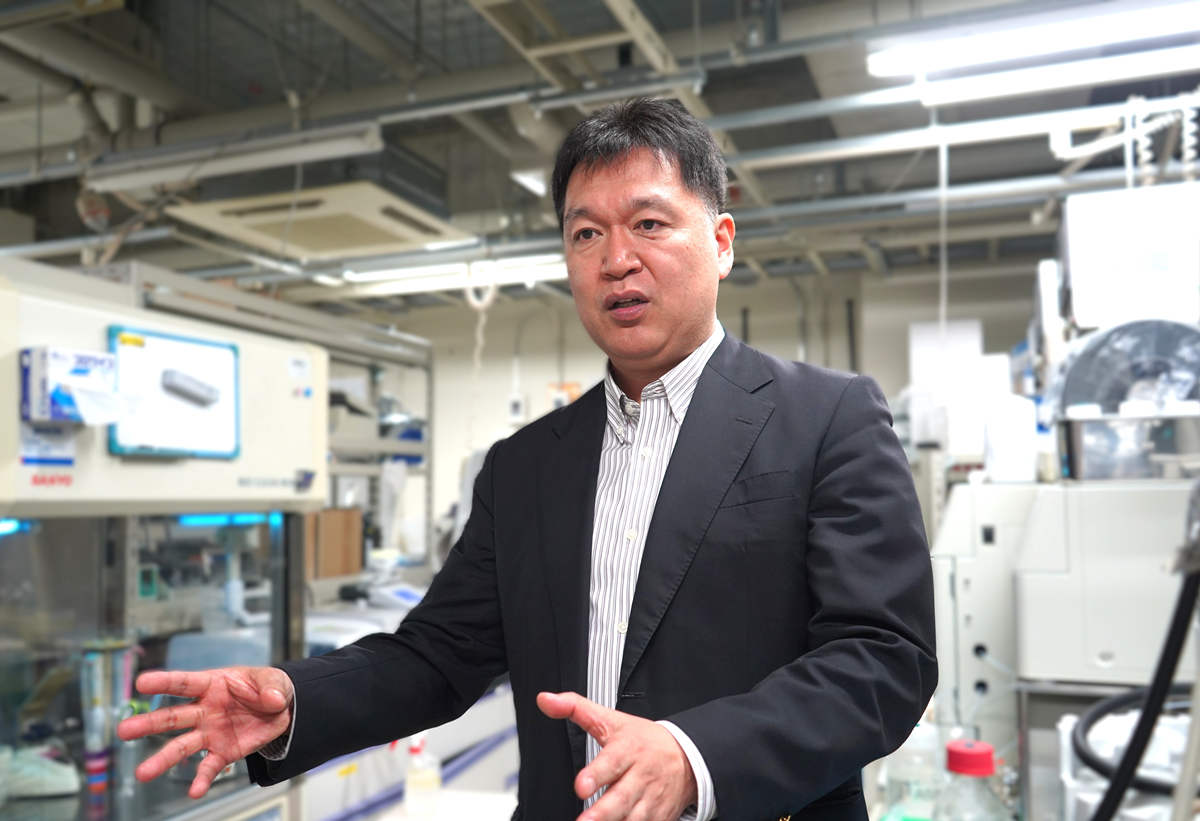Researchers want to transform the natural and abundant resource wood into useful materials, and central to that is a molecular machine found in fungi that decomposes the complex raw material into its basic components. A Kobe University researcher and his team now were the first to come up with a test feed for the fungal molecular machine that allows them to observe its close-to-natural action, opening the door to improving it and to putting it to industrial application.

Biochemical engineers want to transform the abundant and renewable material wood into bioplastics, medically relevant chemicals, food additives or fuel. However, the complex structure of wood has been a major hurdle for this. The Kobe University bioengineer KOH Sangho explains, “Wood is composed of different, chemically linked materials such as lignin and hemicellulose that first need to be separated to become available as source materials.” In other words, the wood needs shucking. Fungi have enzymes, tiny chemical machines, capable of doing that, but to improve and adapt them for industrial use, we need to understand how they work, and researchers did not have a suitable feed, or “substrate,” for the enzyme to study its function. “As a graduate student at Shinshu University, I failed to produce the typical enzymatic reaction dynamics graph we know from the textbooks using the commonly used test substrate. I even reached out to the researcher who first found the enzyme to ask what I was doing wrong, but he replied that I wasn’t doing anything wrong and that my results were typical of attempts to characterize this enzyme,” Koh recounts.
Motivated by this, the fledgling bioengineer and his team created a new material that retains the key structural features of the enzyme’s natural substrate while still being simple enough to allow chemical modification and computational simulation. “The key to our ability to create a suitable substrate was that we had previously found another enzyme that allowed us to create very specific hemicellulose fragments that could not be produced in any other way. Only with these fragments we could chemically synthesize a suitable test substrate,” says Koh about why nobody else has been able to characterize the enzyme.
The bioengineers now published their results in the journal Biochemical and Biophysical Research Communications. Being the first team able to observe the isolated enzyme’s action in a near-natural setting, they were the first to ascertain its reaction speed and affinity, essential parameters for bioengineers working on any enzyme. Koh says: “When, as a result of using the substrate I designed, the textbook-like reaction dynamics emerged, I was really happy. With this we can finally characterize the enzyme’s ‘true’ nature, and improve and apply it industrially, too.”



Their computational simulations showed what made the difference between previous attempts and their approach: So far, researchers had focused only on the specific location within the substrate where it should be cleaved and thus the test substrate they used basically only consisted of the connecting structure. However, Koh’s newly synthesized substrate retains a short hemicellulose tail attached to the reaction site, and it turned out that it is this tail that the enzyme binds to when performing its role.
Now that the researchers are in possession of clear performance parameters and the reaction mechanism of the enzyme, they want to search for better alternatives in different fungi, and try to chemically modify the molecule to see how that affects its performance. In addition, the researchers think that their test substrate will also play a role in studying how this enzyme works together with others to separate the different components of wood. Koh concludes, “We think this was a significant step towards the process’s industrial application to the generation of useful chemicals from the abundant natural resource.”
Acknowledgements
This research was funded by the Japan Society for the Promotion of Science (grants 23K13870 and 17K07874) and the Sugiyama Sangyou Kagaku Research Foundation. It was conducted at Shinshu University in a collaboration of researchers from the National Institute of Advanced Industrial Science and Technology, Kobe University and Shinshu University.
Original publication
S. Koh et al.: Synthesis of a natural core substrate with lignin-xylan cross-linkage for unveiling the productive kinetic parameters of glucuronoyl esterase. Biochemical and Biophysical Research Communications (2024). DOI: 10.1016/j.bbrc.2024.150642
Release on EurekAlert!
Measuring how much wood a wood shuck shucks with all-new wood shuck food










